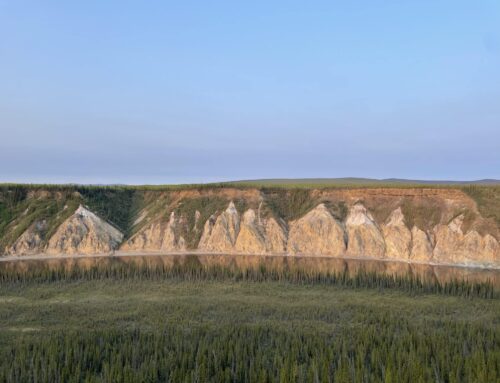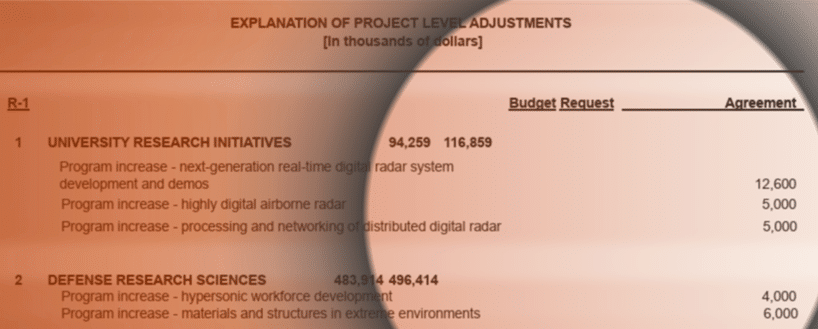October 15, 2018
Alaska Roadless Rule
USDA Forest Service
Alaska Region
Ecosystem Planning and Budget Staff
P.O. Box 21628
Juneau, Alaska 99802-1628
Dear Forest Service Rulemaking Team,
Taxpayers for Common Sense (TCS), a national nonpartisan budget watchdog organization, submits this letter as our official public comment on the Notice of Intent published by the U.S. Forest Service to prepare an Environmental Impact Statement regarding the management of inventoried roadless areas in the Tongass National Forest. Our organization has tracked government waste issues for nearly 25 years and we are concerned the proposal to exempt the Tongass National Forest from the 2001 Roadless Rule will cost American taxpayers tens of millions of dollars in increased timber subsidies. As the Forest Service undertakes an analysis of the proposal, it is imperative that the agency fully examine and account for all potential costs, including the net fiscal effects of administering sales for timber harvest in roadless areas.
Background
For decades, the Forest Service has administered timber sales in the Tongass that have generated net losses for the agency, and thereby federal taxpayers. That is, the costs incurred by the Forest Service to administer its timber sales program have surpassed receipts generated from the resulting sales. In 2016, the Government Accountability Office (GAO) reported that from fiscal year (FY) 2005 to 2014, the Forest Service expended an average of $12.5 million annually for timber-related activities and received only $1.1 million on average in receipts from timber harvest, resulting in an average net loss of roughly $11.4 million.
The receipts data GAO used to make its calculation were accurate, but the expenses of the Forest Service were understated because the GAO considered neither certain trust fund outlays nor the costs of roadbuilding to implement timber sales.
Including outlays from trust funds providing for specific types of timber sales and reforestation after timber harvest, the Forest Service’s annual expenses on timber-related activities averaged nearly $14 million over the 10-year period, resulting in an average annual net loss of $12.9 million. Extending the same methodology, the Forest Service lost $13.9 million on average over the 19-year period from FY 1999 to 2017 administering timber sales.
However, these annual loss averages do not take into account the millions of dollars the Forest Service spends annually to build and maintain roads in the Tongass National Forest, of which the “vast majority … were developed for timber harvest purposes.”[1] Despite their primary intended use – to facilitate timber harvest – the costs of building and maintaining these National Forest System roads are fully paid for by the Forest Service. If all roadbuilding costs are taken into account, the Forest Service has lost $25.2 million on average annually over the last 19 years providing for timber sales in the Tongass National Forest.
|
Average Annual Receipts, Expenses, and Losses from Tongass Timber Sales |
|||||||
| ($ in millions) | |||||||
| Costs Considered | |||||||
| Calculation Source | Time Period (FY) | Timber Sale Admin. | Trust Funds | Road-building | Average Receipts | Average Costs | Average Loss |
| GAO – 2016 Report | 2005 – 2014 | X | $1.1 | $12.5 | -$11.4 | ||
| Reported USFS receipts and expenses | 2005 – 2014 | X | X | $1.1 | $14.0 | -$12.9 | |
| Reported USFS receipts and expenses | 1999 – 2017 | X | X | $1.3 | $15.2 | -$13.9 | |
| Reported USFS receipts and expenses | 1999 – 2017 | X | X | X | $1.3 | $26.6 | -$25.2 |
The large and consistent losses resulting from previous timber sales in the Tongass indicate that under current practice, the Forest Service will continue losing money by selling timber in currently roaded areas. Selling timber in roadless areas would require the Forest Service to spend more constructing roads for harvester access. As a result, we project that Forest Service losses from timber management would increase substantially.
In addition, new timber sales in roadless areas would increase the mileage of roads that must be maintained, again at taxpayer cost. The Forest Service cannot adequately maintain the existing 370,000 miles of roads in the National Forest System. The deferred maintenance backlog for these roads is currently around $3 billion. Adding more miles to the road system in National Forests without devoting funds to pay for their maintenance will only increase that backlog. Any assessment of allowing timber harvest in roadless areas, which would require significant new road construction, must account for the maintenance costs associated with new roads.
The Current Rulemaking
In preparing the environmental impact statement on potential revisions to management of Tongass roadless areas, the Forest Service should evaluate a full range of alternatives that address the fiscal impacts of management policies. Those alternatives should include:
- An alternative that does not allow any timber sale that will result in a net loss to the Treasury, taking into account direct costs and losses from timber sale and reforestation trust funds.
- An alternative that does not allow any timber sale that will result in a net loss to the Treasury, taking into account direct costs and losses from timber sale and reforestation trust funds, plus the cost of necessary road building.
- An alternative that does not allow any timber sale that will require the construction of new roads for which the Forest Service does not have a reasonable likelihood of funding for maintenance.
In addition, in evaluating the alternatives in the environmental impact statement, the Forest Service should consider the full range of fiscal impacts, including:
- Net losses from timber sales;
- The cost to the Treasury from associated road-building;
- Future road maintenance costs; and
- Liabilities associated with degraded road conditions when Forest Service road maintenance appropriations do not meet the level necessary to adequately maintain road miles created as a result of new timber sales.
A complete or partial exemption to the roadless rule in the Tongass National Forest would substantially increase taxpayer losses by increasing expenses for building roads to implement timber sales in roadless areas. Which is why, when analyzing this proposal, the costs of resulting roadbuilding need to be fully understood. This imperative is not ours, but simply what’s demanded by the Executive Orders guiding federal agency rulemaking.
Within two weeks of assuming office, President Trump signed Executive Order 13771, “Reducing Regulation and Controlling Regulatory Costs,” which emphasized the need for federal agencies to carefully consider the costs of regulations they promulgate. To guide such consideration, previous executive orders that are still in effect outline how agencies should execute cost-benefit analyses for rulemakings. Executive Order 13563, which reaffirms the long-standing principles established in Executive 12866 in 1993, states that, “each agency is directed to use the best available techniques to quantify anticipated present and future benefits and costs as accurately as possible.”
In the current rulemaking considering exemptions to the 2001 Roadless Rule for Alaska, such future costs include timber sale administration costs, roadbuilding costs, and road maintenance costs, among others. The Forest Service is therefore required not simply to take these costs into account, but to quantify each “as accurately as possible.”
Conclusion
Taxpayers for Common Sense strongly urges the Forest Service to examine how exempting Alaska from the 2001 Roadless Rule in whole or in part, and expanding timber sales into inventoried roadless areas as a result, would affect the fiscal impact of these sales to taxpayers.











Get Social